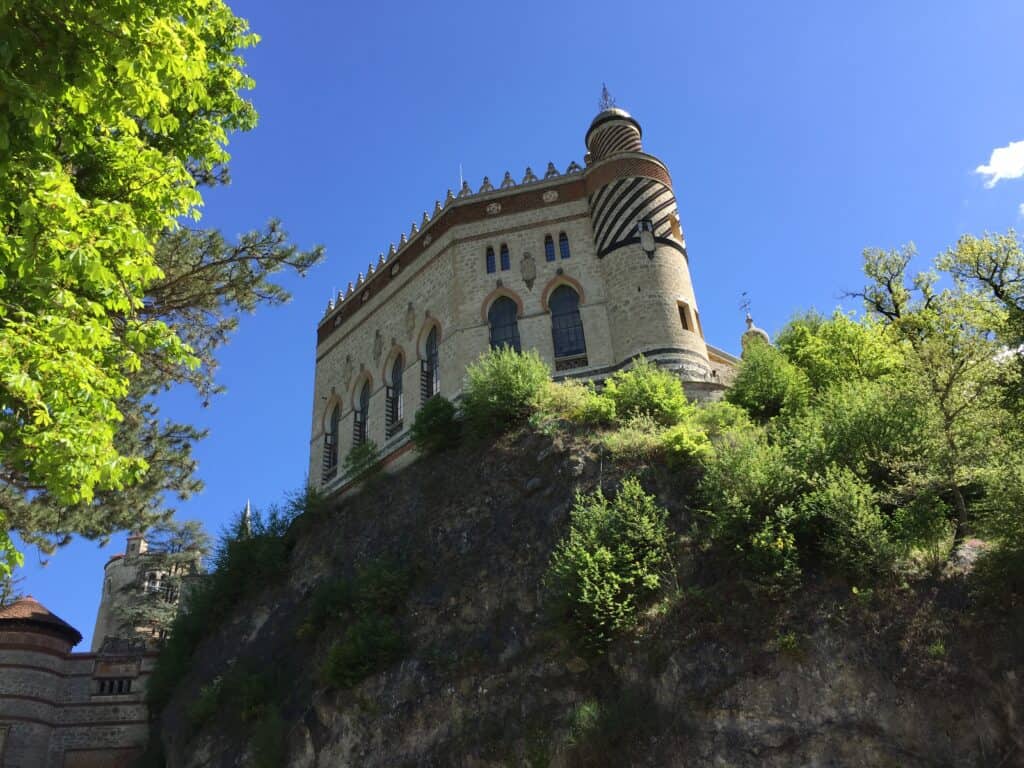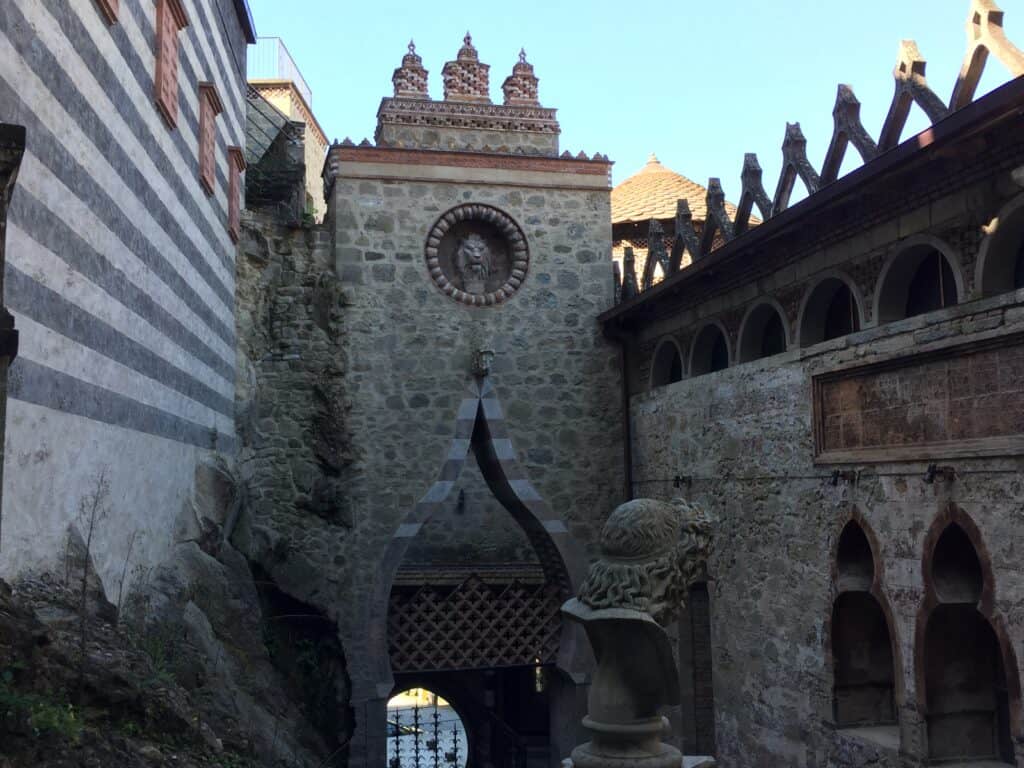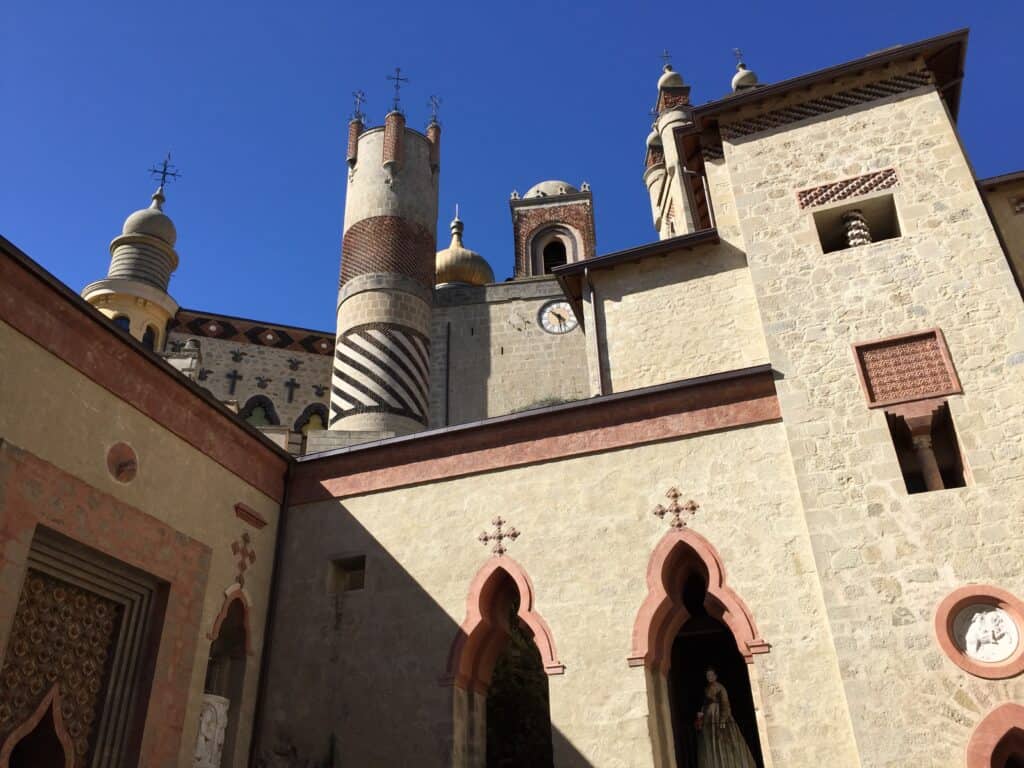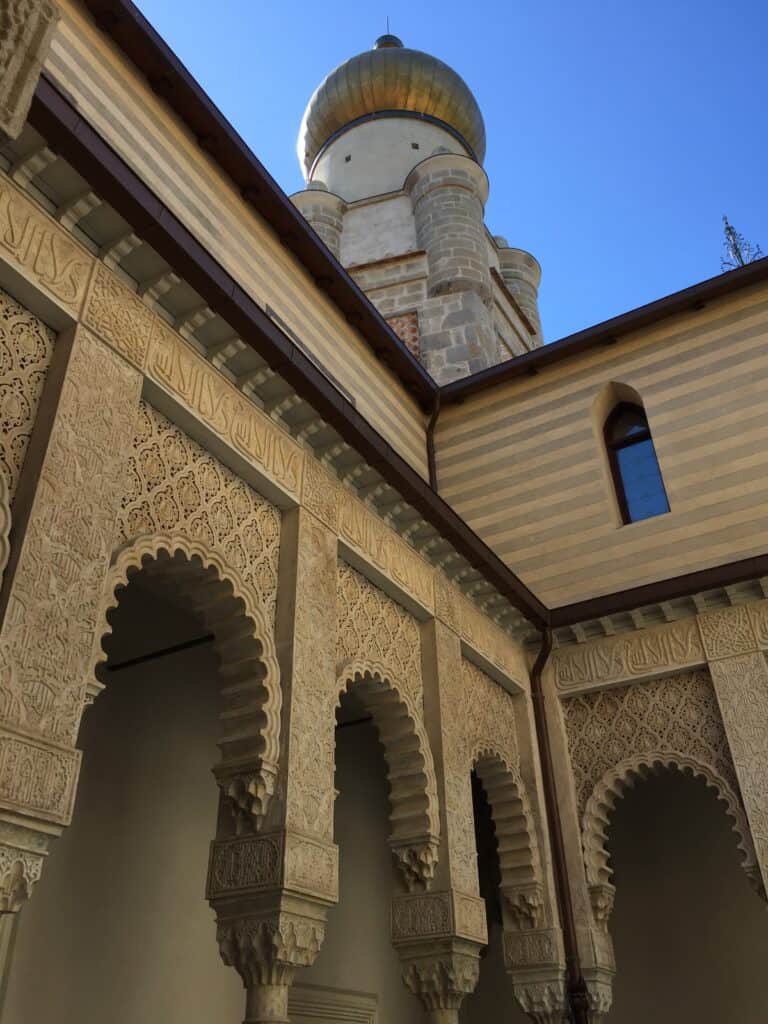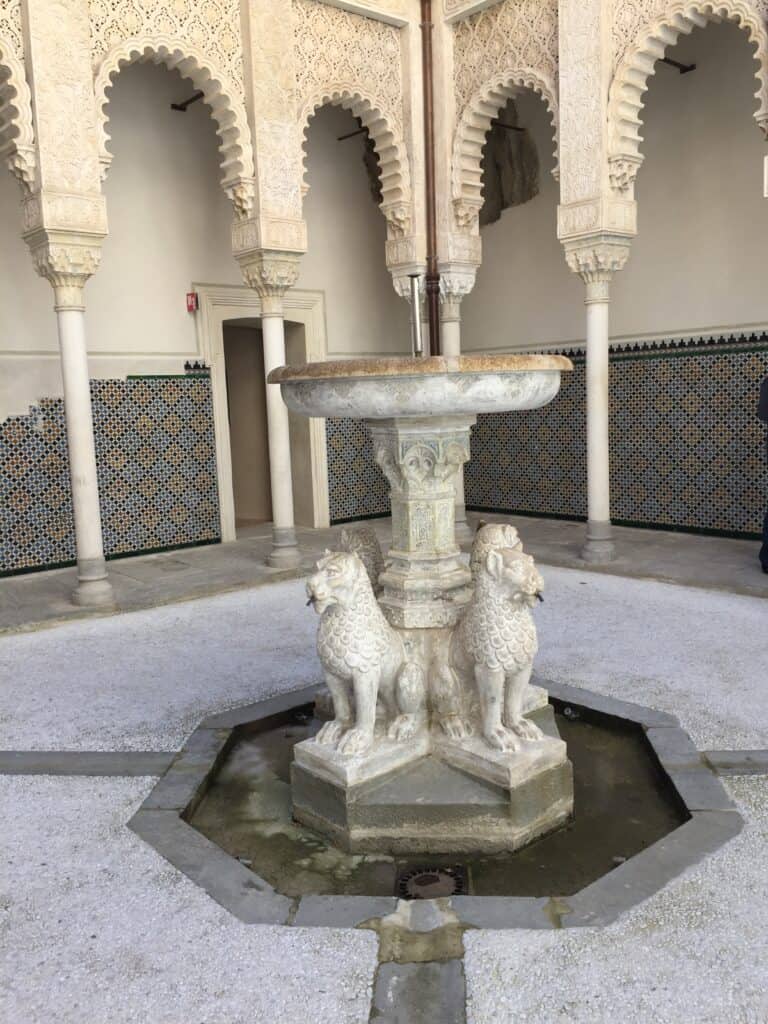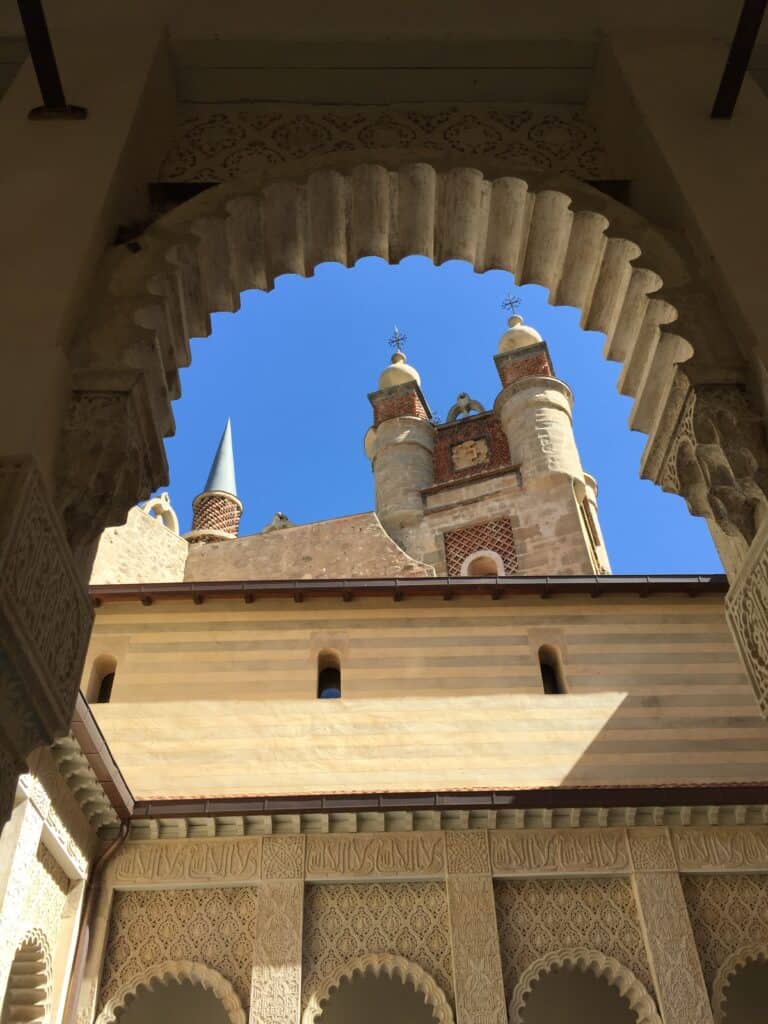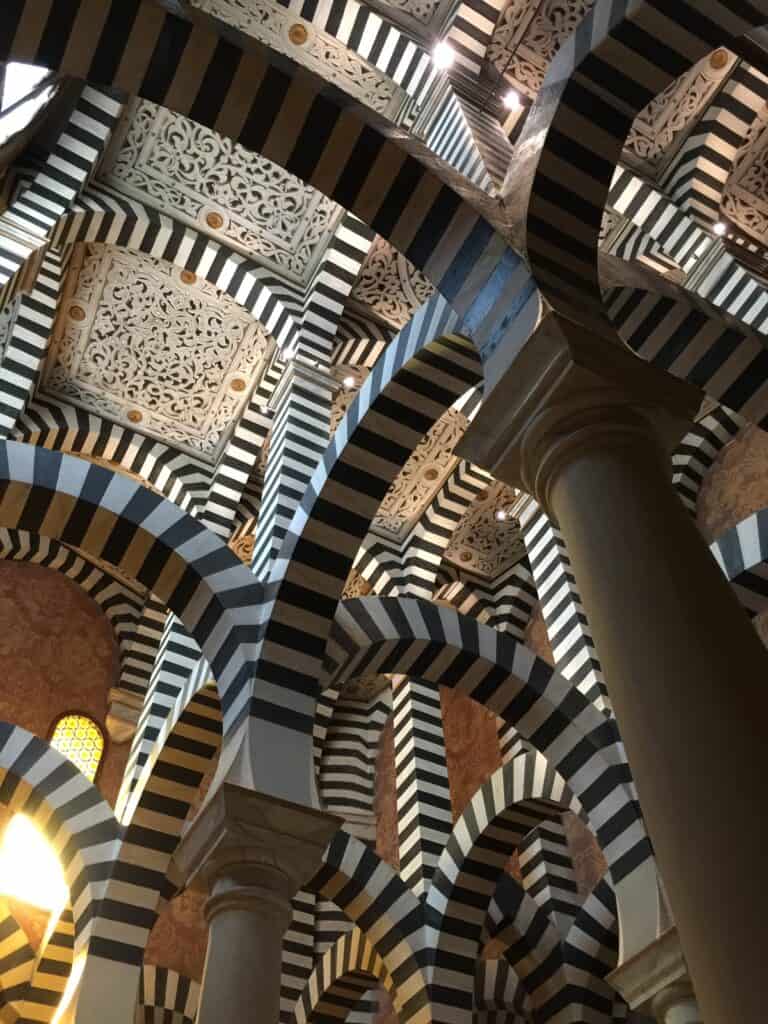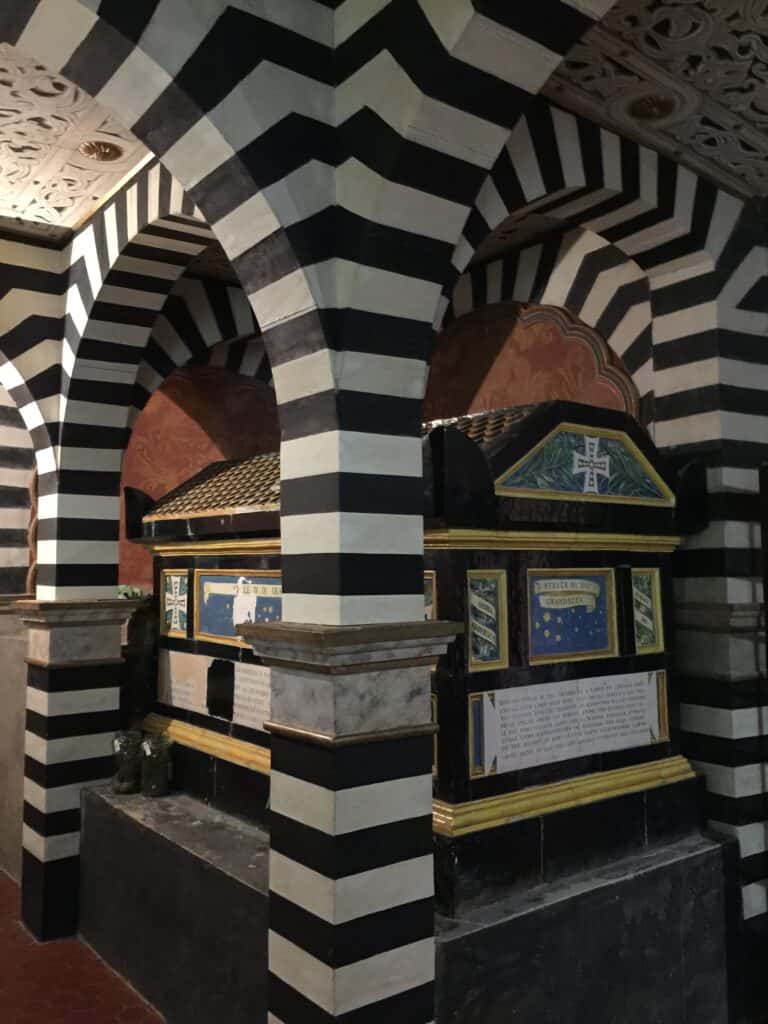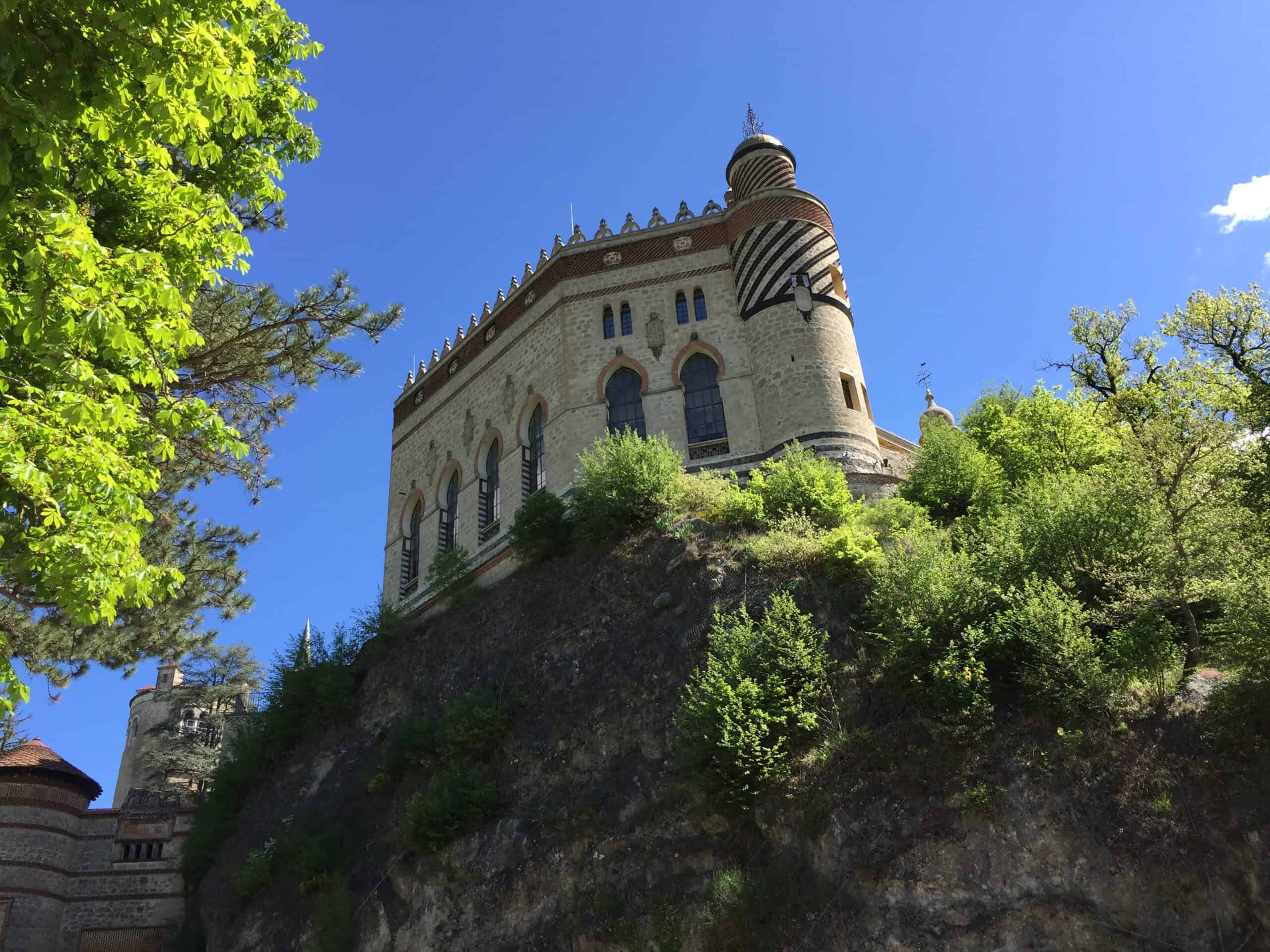
Located on the hills near Bologna, the Castle called “Rocchetta Mattei” owes its name to Count Cesare Mattei. In 1850 bought the land where the ruins of the medieval Castle stood and began the construction of the “Rocchetta”, personally directing the works, where he settled definitively starting from 1859, leading a life as a medieval lord with a lot of courts.
In the following years, he devoted his efforts to studying and popularising alternative medicine to baptise Electrohomeopathy. This practice ensured his worldwide success, and after the first experiments, he began the production of the same electro-homoeopathic preparations exporting them abroad.
The Castle’s structure was modified several times by the Count during his life and by his heirs, making it a labyrinth of towers, monumental stairways, reception rooms, private rooms that recall different styles: from the neo-medieval to the neo-Renaissance, from the Moorish to the Liberty.
The long stone staircase that goes up to the main entrance is decorated with numerous nineteenth-century statues. The main door in Moorish style is flanked by a figure holding the World on his shoulders, halfway between a harpy and a gargoyle.
The Courtyard of the Lions is inspired by the much larger courtyard of the Alhambra in Granada. The fountain with four lions is surrounded by a splendid portico full of precious Sevillian stuccoes and tiles in the centre.
Another iconic room is the Chapel which combines Arab-Islamic elements, such as the arches inspired by those of the Mezquita in Cordoba, with others of the Italian medieval architectural tradition. Its structure and decorations are made with local materials, including plaster, concrete, brick and wood. Even the ceiling decorations are not wooden but painted canvases that reproduce inlays with golden flowers instead of wood.
The monumental tomb is now placed in the loggia above the chapel altar. The splendid majolica on two sides shows the stars classified according to the heavenly hierarchies of the time, two inscriptions in the scrolls that recall the greatness of Creation and the Universe compared to the minute and fragile human condition. In addition, there are the symbols of the Catholic faith (the cross), eternity (the pine cone) and sleep (the poppy bulb), as well as herbaceous decorations and two Latin scrolls.

